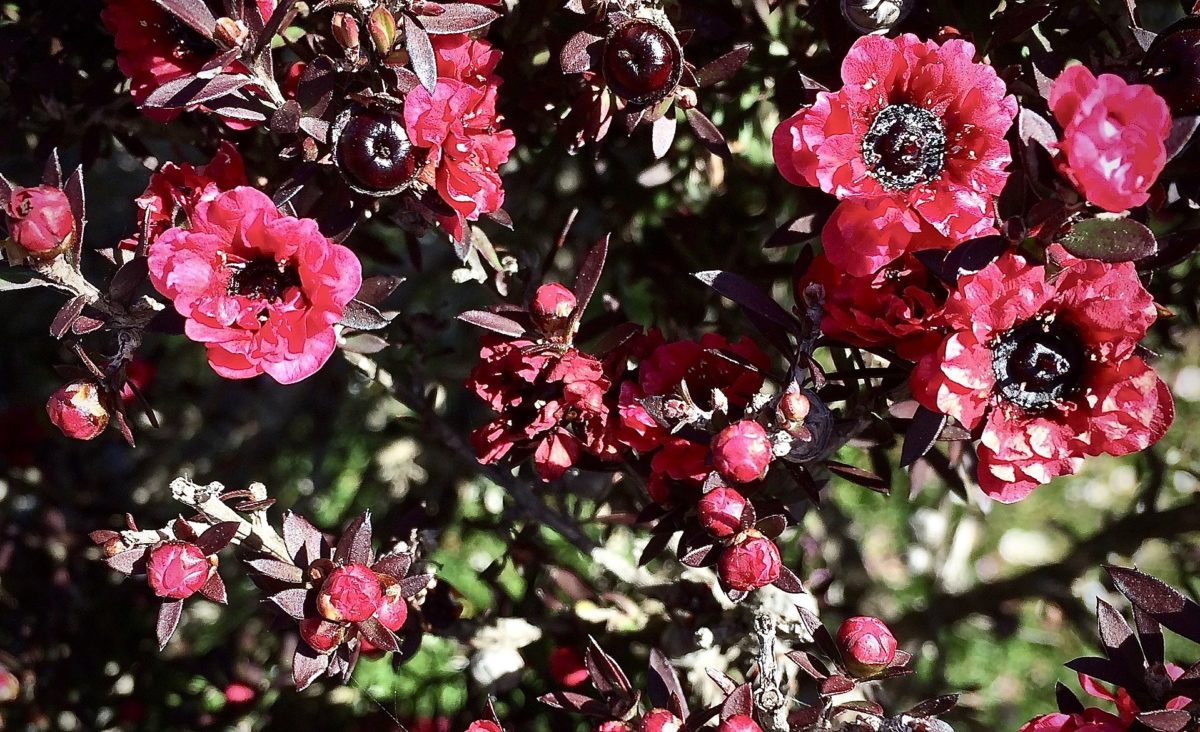A national survey has been conducted to help save Australian native species from the devastating myrtle rust disease.
A national living collections database of myrtle rust-susceptible plant species will be created from the survey, open to those across the and Botanic Gardens Australian and New Zealand (BGANZ) network and beyond with species from the family myrtaceae in their collections.
Myrtle rust spores are microscopic and the disease is spread mostly via wind, but the thousands of spores can also be spread via wildlife, infected plant material, contaminated equipment, clothing and vehicles.
The disease can cause deformed leaves, heavy defoliation of branches, reduced fertility, dieback, stunted growth and plant death.
The wind is believed to have carried spores to this country from Australia, where myrtle rust was first found in 2010.
The fungus has spread rapidly since the first case in New Zealand was identified in 2017.
The family myrtaceae includes some iconic Australian and New Zealand species such as:-
- In Australia: paperbarks, tea-trees, eucalypts, guavas and lilly pillies;
- In New Zealand: pōhutukawa, mānuka, rātā, and some common ornamental garden plants like bottlebrush and lilly pilly.
Serious declines towards extinction are under way in some species, and broader ecological consequences are expected.
The Australian Government recognises myrtle rust as a key threat to Australia’s threatened species.
Biosecurity funding from the Australian Government’s Department of Climate Change, Energy, the Environment and Water (DCCEEW) is supporting the Council of Heads of Australian Botanic Gardens (CHABG) and BGANZ) to develop the database.
The project will ascertain which species are held in collections across seed banks, botanic gardens, arboreta and their nurseries.
Data from the survey will be used to inform future prioritisation, research and conservation actions for Myrtle Rust-affected species.
The information collected will enable botanic gardens, arboreta, nurseries, seed banks and researchers to use the data to strategically plan and manage their collections, as well as support further research.
The survey results will also be shared with governments, business and the philanthropic sectors so that policy makers and funding bodies have additional information to assist in the prioritisation of future resources.
Denise Ora, Chair of CHABG and Chief Executive of the Royal Botanic Gardens and Domain Trust, said it was critically important Australia’s ex situ conservation facilities continued to work together to share information, resources and plant material.
“Doing so will give us the very best chance of combatting the threat of myrtle rust to Australia’s native myrtaceae,” she said.
Chris Russell, the Interim Chair of BGANZ, said working with CHABG to deliver the survey meant members could tap into additional expertise and experience of others managing collections in response to the myrtle rust threat.
“We look forward to seeing the data generated through this work supporting further Australian myrtaceae collaborations across our network for many years to come,” he said.
Wide-scale management of myrtle rust in the natural environment is untenable, particularly when considering the rate and mode of spread of fungal spores. Furthermore, the significant resources needed to manually treat infected populations to ameliorate fungal infection at scale makes this approach completely unrealistic within current knowledge and resources.
Ex situ (off site) collections of species in botanic gardens, arboreta, their nurseries and seed banks present much smaller numbers of individuals than would normally be found in healthy, functioning populations in the wild (in situ).
These ex situ insurance populations can provide some level of hope for maintaining a species existence at the collection level, particularly when in situ populations are unable to reproduce due to infection.
While ex situ collections usually require an intensive level of management to maintain their health, they also present opportunities for regular monitoring to potentially identify the early signs of infection and improve interventions with timely application of fungicidal treatments.
With current advances in genetic tools, it is also possible to cost-effectively assess genetic variability in the ex situ collections and manage them to ensure we have the best chance of maintaining viable populations.
The survey was released on August 11 and will be promoted at the 7th Global Botanic Gardens Congress in Melbourne this month before closing on October 21.
The results will be released at the end of 2022 and will be made freely available to BGANZ members and the public.
In this country, the Ministry for Primary Industries (MPI) and the Department of Conservation (DOC), with the help of iwi, the nursery industry and local authorities, initially ran a response operation to try to contain myrtle rust. Officials also wanted to determine the extent of its spread.
Within months, it became apparent that the disease was widely dispersed in New Zealand.
In May 2018, the response was closed, and the focus moved to science to find ways to manage the disease in the longer term.
Source: Scimex












